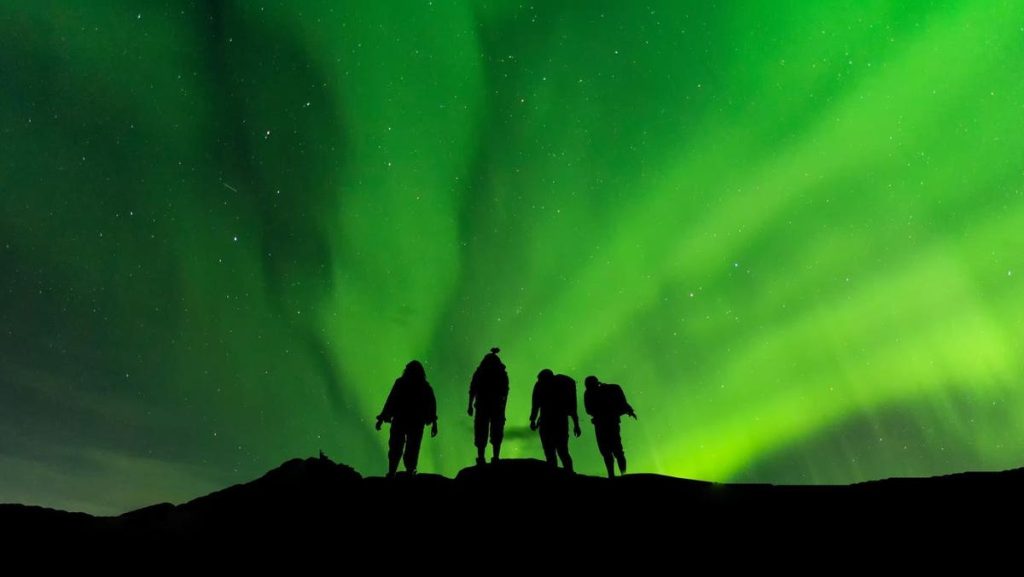September is a great month for going outside to go stargazing in the northern hemisphere. With the nights now getting longer, there’s no need to wait until late at night and, besides, it’s about to get much cooler.
From finding Uranus and spotting the Andromeda Galaxy to watching a crescent moon and planning a trip to see the aurora borealis, here are seven things every stargazer should do this September 2023.
1. Uranus ‘Hiding’ In A Spectacular Alignment
When: just before midnight on Monday, September 4.
Where: east-northeast.
Tonight there will be a gorgeous alignment of Jupiter, the moon and the Pleiades open cluster of stars. However, grab a pair of binoculars and look just below the moon and you’ll see the blueish dot of seventh planet Uranus about 1.8 billion miles from the sun.
2. ‘Earthshine’ On The Moon
When: after sunset on Monday, September 18.
Where: southwest.
Sunlight reflecting from Earth on to the lunar surface is detectable by the human eye only when the moon is a slim crescent. Tonight there’s an opportunity to do just that, with the moon just 14% lit. It looks incredible through binoculars or a small telescope, but you can see it tonight with the naked eye, too. The light you see on the lunar surface has reflected off Earth’s oceans and ice, but over the last few decades it’s been dropping in intensity, possibly because the ice sheets are melting.
3. The Andromeda Galaxy
When: as soon as it gets dark (most easily in moonless skies from August 8-18).
Where: rising in the northeastern night sky.
The Andromeda galaxy, which is much like the Milky Way, only larger, and technically the most distant object you can see with your naked eyes (give it a try!) at around 2.5 million light-years distant. Unlike almost everything else in the night sky it’s heading straight for us—and will merge with the Milky Way in a few billion years.
Dark skies free of light pollution will help for this one, but wherever you are in the northern hemisphere grab a pair of binoculars and have a go. High in the northeastern sky after dark, you should be able to see a faint smudge (hint: it looks better if you look to its side, not straight at it).
4. A ‘False Dawn’ Around The New Moon
When: before sunrise in late September and early October.
Where: eastern horizon.
If you’ve never seen the solar system glow then get yourself to to a very dark place this month for a sight you’ll never forget. Zodiacal light is the dust along the plane of the solar system, which reflects sunlight to create—only for a few weeks in late September and early October—a cone-shaped beam of light on the eastern horizon a few hours before sunrise.
5. The Northern Lights
When: September through March.
Where: 65º to 70º North latitudes (Alaska, northern Canada, Iceland, Lapland—northern Norway, Sweden, and Finland—and northern Russia.
Aurora doesn’t have a season per se. The green lights high up in Earth’s atmosphere—mostly at its polar regions—occur because the sun spews charged particles throughout the solar system. However, what you do need to see them is darkness—and this month’s equinox sees the return of darkness to northern regions of the northern hemisphere.
Sure, you can wait until they appear lower down on the planet. That’s happening more frequently than for a decade thanks to our star now approaching its “solar maximum.” However, if you want to have the best chance, head north. This month (and March) are generally regarded as the best months to see aurora because the magnetic field of Earth is side-on, so in-sync, to the solar wind, thanks to the equinoxes.
6. The ‘Super Harvest Moon’
When: Local moonrise on Friday, September 29, 2023.
Where: Southeastern sky.
Enjoyed the “Super Blue Moon?” The next full moon, the “Super Harvest Moon” or “Harvest Supermoon,” will be 100% illuminated at 4:59 a.m. EDT on Friday, September 29, 2023 and best seen from North America at moonrise later that day during civil twilight.
7. The ‘Summer Triangle’
When: Dusk each evening in September.
Where: Southwestern night sky.
Say goodbye to summer by finding these three bright stars, now sinking on its side towards the western horizon in dusk. The vast shape is simple and comprised of three bright stars, with Altair and Vega closer to the horizon and Deneb higher up.
Wishing you clear skies and wide eyes.
Read the full article here










